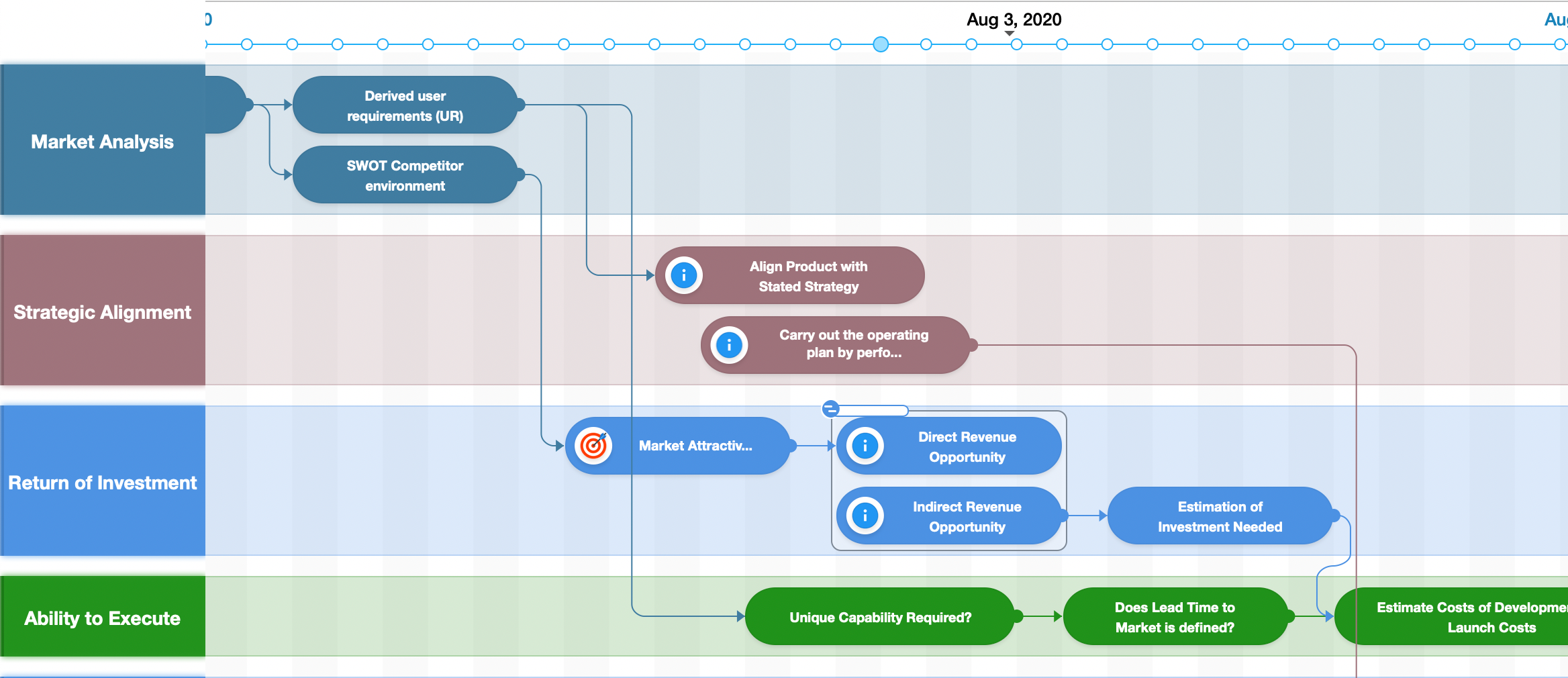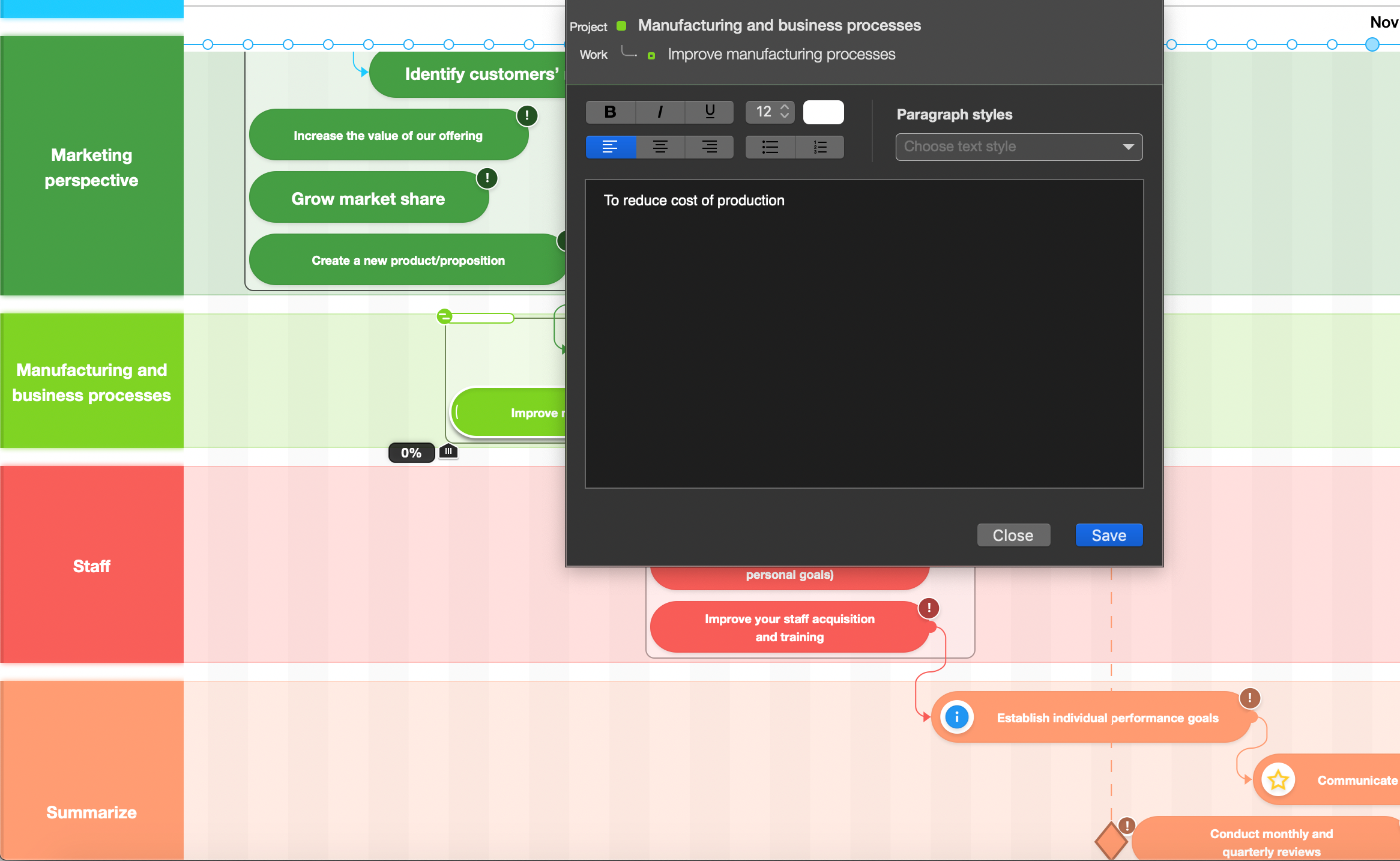
Step-by-Step Guide to Prepare a Roadmap for a Project
Reading Time: 5 minutesUpdated on Feb. 07, 2020: We’ve stopped support of Roadmap Planner but the Roadmap feature is now available in our new goal-oriented platform – Goals by KeepSolid. This business solution provides the same opportunities to plan and execute your strategies and even more. Check out Goals by KeepSolid and stay tuned for its updates!
Project management is an extremely complex job. It requires tremendous planning capabilities and high level of self-organization. However, don’t worry if you don’t exactly excel in these departments, there is a tool that can help called project roadmap. We’ve already written about why it is so useful and what project roadmap is and isn’t, and today’s piece will show you how to prepare a roadmap for a project.
Things to consider before building a project management roadmap
So, how to make a roadmap for a project? Before we can even begin, make sure you’ve got a couple big questions addressed:
- Has your organization determined your product’s vision? I.e. a big picture of what your project will accomplish for your company and in the market.
- Has your organization defined a global strategy to make the product vision a reality? We’re not talking about a fully worked out strategy document – that would be the roadmap itself. But to start making a roadmap for a project, you have to identify the whats and whys of the project strategy.
Developing a project management roadmap
Once you’ve answered said questions, you’re ready to start preparing a roadmap for your project. A number of aspects go into this process, so let’s cover them one by one.
Choose the right roadmap project management software
The first and arguably the most important thing to think about when making a roadmap is picking the software. This decision in crucial because its results will stay with you throughout the whole project’s development. Depending on which tools you choose, you can either spare yourself countless hours of extra work, or doom yourself to them; your roadmap will either facilitate your success and help your team stay on track, or puzzle and misinform all stakeholders.
What should you keep in mind when choosing a roadmap project management software? A number of things:
- Ability to modify your project roadmap ad hoc to keep it updated. It should never become a static document, but rather remain living and dynamic. As your project’s priorities, target audience, budgets, scale of operations change, your roadmap should evolve to reflect that.
- Team collaboration. You want your roadmap project management software to promote teamwork by being easily accessible to any relevant party. This way all stakeholders can get the necessary information on the project and have the up-to-date picture of the development.
- Ease of learning and using. Like with most tools we use, the more intuitive it is, the more likely we are to utilize it to great effect. Same goes for roadmap creating software – it should take minimal effort for stakeholders to create, update, and apply it in their daily work.
- Visual appeal. PMing takes quite a bit of presenting your plans and ideas to CEOs, business owners, shareholders, etc. This makes visually compelling roadmaps a huge advantage when fighting for stakeholders’ buy-in.
Example of Roadmap created in Roadmap Planner
Now you can see why many PMs prefer using professional roadmap project management software such as Roadmap Planner instead of old-school spreadsheets or presentation tools. A solution like this is specifically designed for crafting roadmaps. It takes into account the need to make updates easily, showcase your plans to stakeholders, and offer means to create clear, representative, and actionable roadmaps.
See that your project roadmaps are compelling and visually clear
One of your key tasks as a project manager is to be an evangelist of your project. You are responsible for providing high-level visual representation of your strategy and getting buy-in from stakeholders. This means that, regardless of the size and scope of your roadmaps, what you don’t want is for them to look like a dull spreadsheet with rows and rows of boring columns and features.
Creating the right first impression is important – so much so, in fact, that many PMs spend hours creating visually beautiful roadmaps. Unfortunately, if in the previous step you’ve selected the wrong tool, this might require extra effort or resources. For instance, you may require help from your designers; management of the resulting beautiful roadmap turns out too difficult; or a visually appealing roadmap proves overly complex and not representative enough.
Such hassle is unacceptable in the modern agile world. Luckily, if you’ve chosen the correct roadmap project management software, your job is halfway done. Now you just need to apply a few basic tips to ensure you’re using your tools to its full extent:
- Use colors smartly – color coding items on your roadmap will help viewers read it and see the big picture.
- Make fonts large – this will ensure that people absorb the important information correctly and not miss a thing.
- Keep it high-level – your roadmap should always focus on global plans and strategy, not the minute details.
Accompany items on your roadmap by strategic justification
Commenting on tasks in Roadmap Planner
When making a roadmap for a project, it’s vital to support your plans and points with persuasive cases. The items in your document should include comments and reasoning behind your initiatives and themes, so that anyone looking at the roadmap could figure it out without you sitting next to them and explaining everything.
Managing comments within the roadmap will allow your team to always be strategic in their decisions. It will also ensure that every task and item that exists in the roadmap has a reason to be there, making it easier to get stakeholder buy-in. Lastly, the ability to backlog your ideas and potential additions to the project will protect those from falling into oblivion.
Review and update your roadmap frequently
Following our previous advice will help you create your perfect roadmap for a project. However, your work doesn’t end there! You need to constantly return to your project roadmap document to review it and make necessary amendments on-the-go.
Doing this will allow your roadmap to never run its course and everyone in your team – to have an accurate picture of where your project stands and what about it may have changed. Once again, it will prove to be a huge benefit here to having chosen the right roadmap project management software that allows for easy updates.

